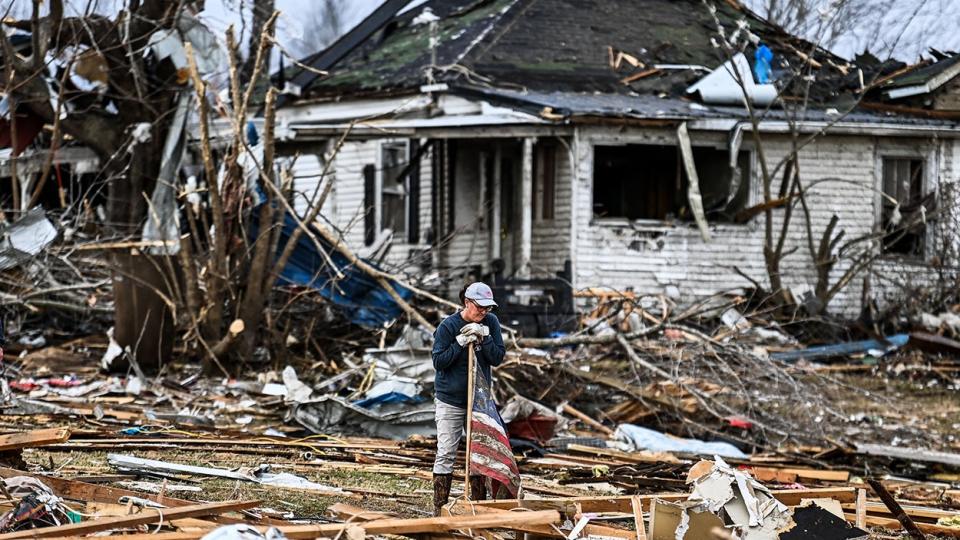How poison-related injuries become common following tornadoes, hurricanes
Cleaning up after storm damage during natural disaster recovery can pose significant health risks.
Often, people only think about physical injuries, such as cuts and scrapes from cleaning up debris after a tornado, but victims commonly suffer from poison-related injuries.
One of the most frequent poisonings that triage doctors encounter during storm recovery is carbon monoxide poisoning. It is often associated with ice storms that cause several days of power outages, but it is also seen in people without power for several days due to spring and summer storms.
"A lot of times, people get out their gas-fired generators," said Dr. Randall Herrin from the University of Oklahoma Health Medical Center. "But don't keep it in a covered space, covered portico and definitely not in your garage. It needs to be outside, well away from the home where adequate ventilation can be obtained."
HOW YOU SHOULD PREPARE FOR A TORNADO
After Hurricane Rita, a Disaster Medical Assistance Team in Beaumont, Texas, treated 21 cases of carbon monoxide exposure within 5 days, resulting in 5 fatalities. The primary cause was the improper placement of portable generators indoors or near air conditioning intake systems.
Another thing to consider is food safety. If you're without power, your perishables will likely spoil within four hours.
"As far as general hazards within the environment, there isn't any one specific thing that was found out beyond the others other than just using some common sense and diligence when you're in the storm's field," Herrin told FOX Weather.
TORNADO SAFETY: HOW TO IDENTIFY THE SAFEST PLACES INSIDE YOUR HOME

Much of staying safe comes down to preparation, he adds. A lot of the common dangers are in the environment you find yourself in after the storm.
"One of the things that people need to think about is preparing for the environment you're going to return to," Herrin said.
If you go into your shelter before a storm, be prepared for a damaged environment. Wear well-fitted shoes or boots and protective clothing. Stay alert and cautious when outside, watching out for hazards such as nails, debris, and downed power lines.
In certain environments, it's best to avoid unknown things. If there have been chemical spills or other substances present, it's best to stay away from them to avoid exposure.
Original article source: How poison-related injuries become common following tornadoes, hurricanes

